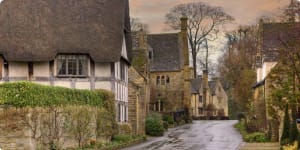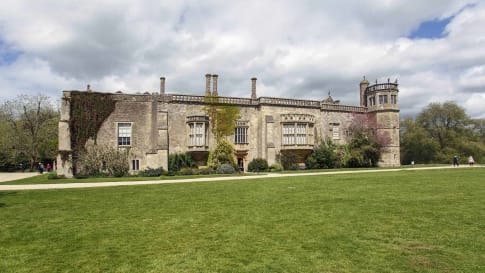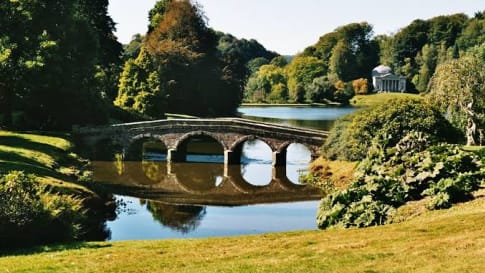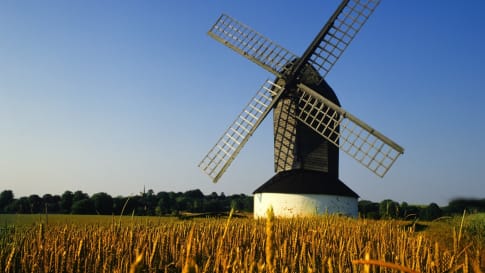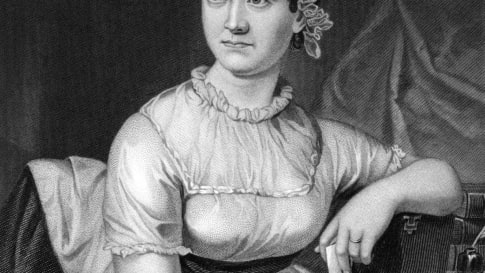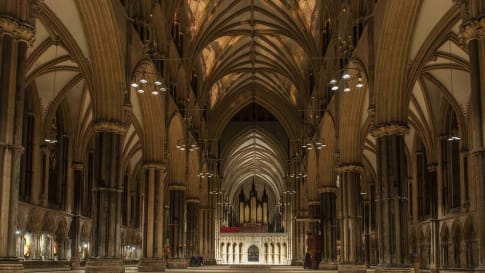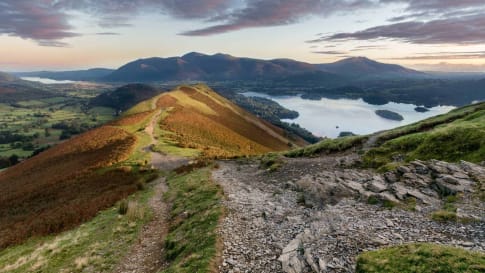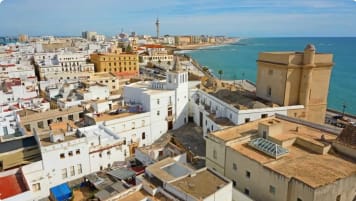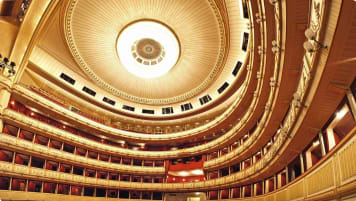England’s villages small group history tours for mature travellers
Guided tour of the villages of England. The tour leader manages local guides to share their knowledge to give an authentic experience across England. This trip includes the UNESCO World heritage site of Avebury as well as villages in Cornwall, Devon, Dartmoor the border of Wales and the Cotswolds.
From $11,794USD
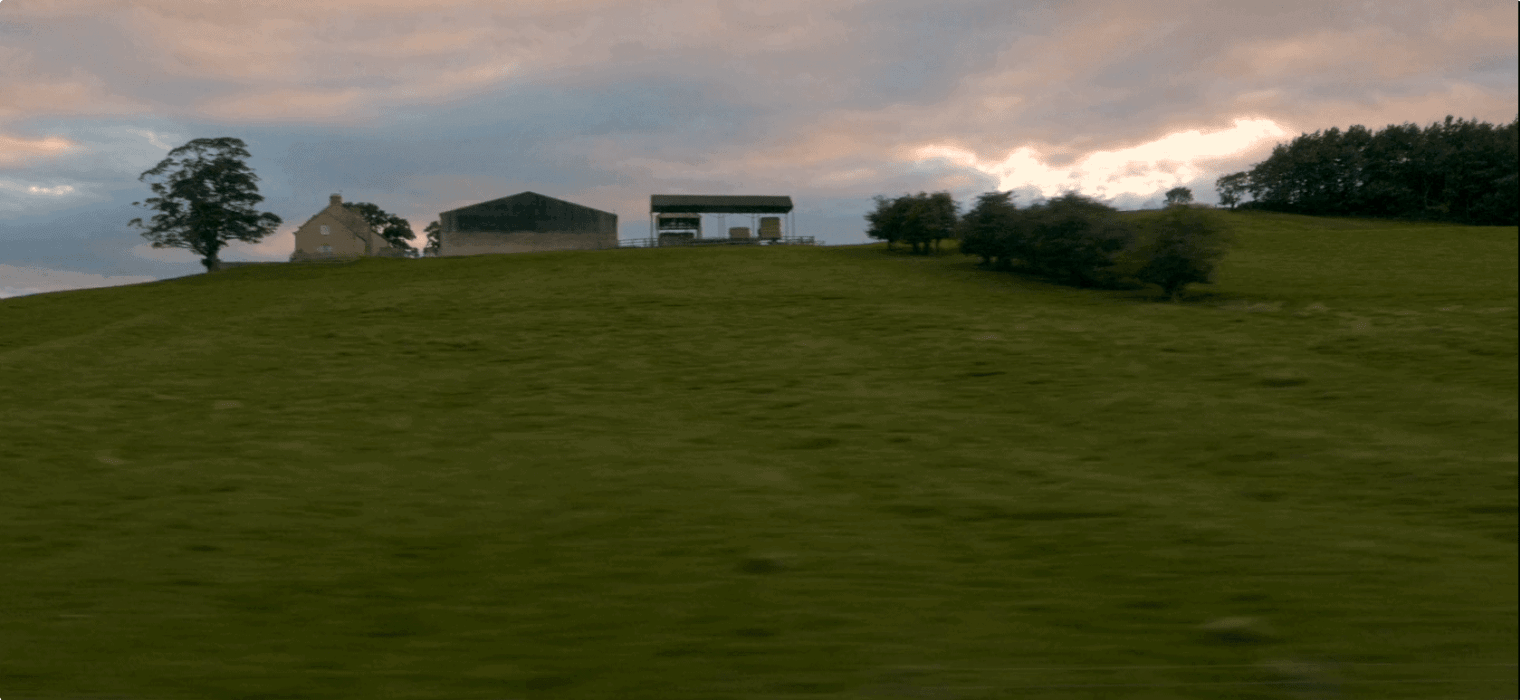
Highlights
- 1. Explore Avebury, with its very own Neolithic World Heritage Site.
- 2. Visit villages used as TV and film sets e.g. Lacock, Castle Combe, Port Isaac.
- 3. Learn about the fascinating styles of architecture that make English villages unique.
- 4. Enjoy magnificent and varied scenery of rural England.

Departure Dates
| Departure Date | Price |
|---|---|
| 15 June 2025 Ends 03 July 2025 • 19 days $11,794 Twin $13,581 Single Available | Selected |
| 09 September 2025 Ends 27 September 2025 • 19 days $11,794 Twin $13,581 Single Available | |
| 29 September 2025 Ends 17 October 2025 • 19 days $11,794 Twin $13,581 Single Available | |
| 14 June 2026 Ends 02 July 2026 • 19 days $12,223 $11,496 Twin $14,242 $13,515 Single Save up to $1100Early Bird | |
| 08 September 2026 Ends 26 September 2026 • 19 days $12,223 Twin $14,242 Single Available | |
| 28 September 2026 Ends 16 October 2026 • 19 days $12,223 $11,496 Twin $14,242 $13,515 Single Save up to $1100Early Bird | |
| 13 June 2027 Ends 01 July 2027 • 19 days $12,554 Twin $14,536 Single Available | |
| 27 September 2027 Ends 15 October 2027 • 19 days $12,554 Twin $14,536 Single Available |
England’s villages small group history tour
Our 18-night England's villages small group tours for mature aged and senior travellers explores the many facets of rural life in England. This educational small group escorted tour takes you through different eras and across a variety of beautiful landscapes. Professional guides teach you about the history and culture that over centuries has created the Villages of England. Over the period of the program your program leader will take you to places such as east Sussex, Oxfordshire, Gloucestershire, Cotswolds, Yorkshire , Dartmoor Devon and Cornwall.
Packed to the brim with history, culture, and striking scenery, Great Britain and Ireland have a lot to offer the traveller. Our small group tour of England's villages are perfect for the mature or senior traveller who wants to explore Britain and Ireland as part of an intimate guided tour with an expert local guide. From walking tours of England, Scotland and Ireland to tracing the Industrial revolution, you can explore Britain on a tour with Odyssey. We take in the must-see sights, while nonetheless offering experiences that venture off the beaten path on Odyssey Travellers English village history tour.
This tour for mature aged and senior travellers includes days spent a number of quintessentially English prettiest and oldest places to live in the villages. This collection of English villages visited reflects a range of economic activities, architectural styles and historic influences. From chocolate box thatched cottages, the local parish church, the inn, to the country house built of Cotswold stone, or fishing boats tied up in what are today popular tourist towns in England. This program explores and provides delight in visiting and learning about the history of some of these English countryside villages. This historic small group tour also provides a look at life in castles, a country estate and manor house. Short guided walks and village museums provide interesting insights into village life often dating back to medieval times.
England's Villages Tour Itinerary & Highlights
The journey tours begins by visiting the Weald and Downland Open Air Museum in Sussex. This provides an opportunity not only to explore country life, but also serves as an excellent introduction to our tour. From across Sussex the 'museum' houses fifty traditional village buildings with historic domestic interiors. It also includes an array of interesting farm buildings and even a mediaeval shop. It vividly portrays the lives of the people in a east English village who lived and worked here over a 600- year period. Working buildings include a water mill and sawpit shed. We also take the chance to view domestic and craft demonstrations reflective of rural life over time.
The Villages of England small group tour also includes visits to numerous country villages and houses that have been used as TV and film sets, e.g. Lacock, Castle Combe, Port Isaac. Perhaps you'll recognise some of these locations from your favourite British dramas and period pieces! We also explore the haunting stones at Avebury, with its very own Neolithic World Heritage Site, and view the Tudor mansion and glorious gardens of Hever Castle, childhood home of Anne Boleyn. In addition, we enjoy taking in the magnificent and varied scenery of rural England, and learn about the fascinating styles of architecture that make English villages unique.
You can learn more about England and Britain with our country profiles where all the other tour departures are listed as well.
For more details, click the ‘Top 5’ or ‘Itinerary’ buttons above! If you’re keen to experience this tour, please call or send an email. Or, to book, simply fill in the form on the right hand side of this page.
Articles published about England
The following list of articles are either published by Odyssey Traveller or are carefully selected external sources to maximise senior traveller's knowledge and enjoyment of England when visiting:
- Medieval British life
- Great Britain Travel tips
- Understanding British Churches
- English Village History
- Britain's National Trust.
- Roman roads
- Gargoyles and Grotesques; an understanding.
- Victorian Country life
- Jane Austen's England
- How to read the British landscape
- The Lake District for poets & Romantics
- History of England: - PODCASTS
- Tudor England
- Anglo- Saxon migration
- Civil wars that influenced medieval Britain
- Country life magazine articles
- Origin of Cotswold stone
Gallery
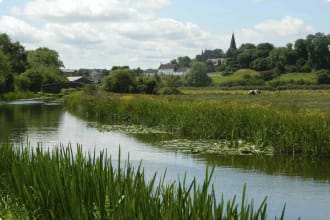
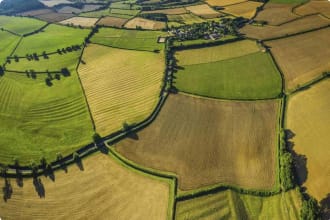
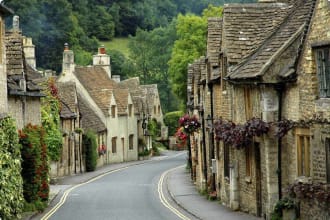
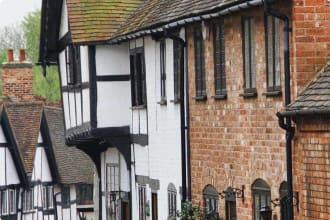
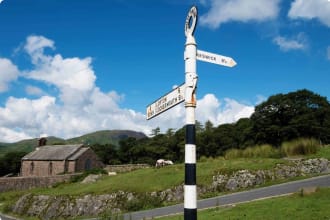
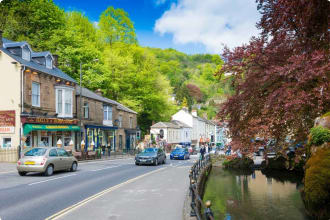
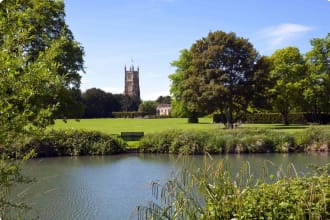
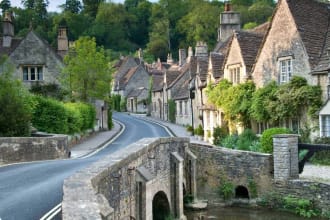
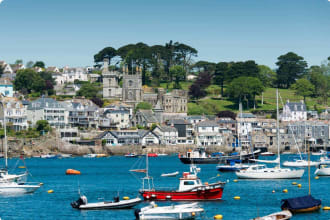
Itinerary
19 days
Day 1: London
Accommodation: 1 night at London House hotel or similar.
We will make our own way to the hotel, where you will meet the tour leader for an introduction meeting, before having a welcome dinner with the group at a local restaurant.
(D)
Day 2: London - Chichester - Trowbridge - Chippenham
Accommodation: 3 nights at Best Western Plus Angel Hotel or similar
In the morning we will visit the Weald and Downland Open Air Museum in Chichester, which provides the perfect introduction to the history of country living in Britain. We then journey across Sussex to the ‘museum’ village, where we will look around fifty traditional village buildings with historic domestic interiors, an array of interesting farm buildings and even a medieval shop. Alongside the buildings are an array of live craft demonstrations, which together offers a unique insight into the realities of day-today living across a 600- year period.
We finish the day with a drive to Chippenham, which will be our base for the next two days.
(B) (D)
Day 3: Chippenham - Avebury - Chippenham
Accommodation: Best Western Plus Angel Hotel or similar
Located on the northern end of the Salisbury Plain, the old village of Avebury is surrounded by England’s largest stone monuments. This collection of Standing stones built in 2600 BCE, is a the Neolithic World Heritage site and includes three stone circles, a long barrow (burial tomb), and a processional avenue. Fascinating finds from the 1930s archaeological excavations are on show at the museum housed in the grounds of Avebury Manor.
The Manor, of Tudor origin, was recently reopened following a major transformation for a new BBC series entitled The Manor Reborn. Featuring different time periods, each room also has reminders of past residents. This is a hands-on experience where we can sit in the master’s chair and even recline in his bed! Medieval walls enclose an elegant Edwardian garden.
There will be time to explore the other prehistoric sites associated with the stone circle and nearby villages too.
(B)
Day 4: Chippenham - Milton Abbas - Corfe Castle - Moreton - Chippenham
Accommodation: Best Western Plus Angel Hotel, Chippenham or similar
Today we will travel across the beautiful landscape of Dorset, known as ‘Thomas Hardy’ country, crossing several spots of particular natural beauty, inducing Cranbourne Chase. We will explore a number of the region’s quintessential villages. Often referred to as the ‘model’ village, Milton Abbas is a superb example of white-washed, thatched- roofed cottages and houses the stunning Abbey Church while the village of Corfe Castle is built from grey Purbeck limestone. As well as exploring the village we will visit the ruins of Corfe Castle itself. Built by William the Conqueror, much of the castle was destroyed by Oliver Cromwell’s forces. The castle’s parapets offer stunning views of the village and surrounding landscape.
Heading west we make a special stop at the Church of St. Nicholas in the tiny Moreton village. Here in the local parish church, we can view the exquisite windows etched by the artist Sir Laurence Whistler. The churchyard houses the grave of T. E. Lawrence, better known as the famous Lawrence of Arabia.
(B)
Day 5: Chippenham - Lacock - Fowey
Accommodation: 2 nights at The Cornwall Hotel or similar
Near Avebury, famous Lacock is a planned medieval estate village now owned by the National Trust. As the layout and character of the village has changed little since the C15th it provides a fascinating picture of village life at that time including fine timber-framed houses, a C14th tithe barn and inns with passageways and stables, survivors from the era of wool trade. On arrival, Lacock may seem familiar – that is because it has served as the setting for many films and television series including the BBC’s Pride and Prejudice, Wolf Hall and Cranford; and Harry Potter and the Half-Blood Prince.
In the afternoon we drive to Cornwall via Dartmoor. In the famous book, by Sir Arthur Conan Doyle, The Hound of the Baskervilles, a message sent to Sir Henry Baskerville read, ‘as you value your life or your reason, keep away from the moors’. Doyle painted an image of the moors as grim, forbidding and dangerous. It can be like that at times amongst the peat bogs when the famous mists descend but the moors are actually a fascinating landscape of tiny villages, farms, rolling hills, granite tors and wild ponies.
(B) (D)
Day 6: Fowey - Polperro - Mevagissey - Fowey
Accommodation: The Cornwall Hotel or similar
Today we will explore the fishing village of Polperro. Polperro’s Heritage Museum of Fishing and Smuggling will provide us with an insight into these two activities that so strongly shaped life in Cornwall’s coastal villages. In fact, Polperro was the centre of the extensive Cornish smuggling industry. We then continue on to visit the Lost Gardens of Heligan, near the fishing village of Mevagissey, the gardens were unveiled in 1992 after decades of overgrowth. After extensive restoration works the gardens are now one of the most popular botanical gardens in the UK.
Remainder of the day is free to explore the beautiful local surroundings of Fowey. You may wish to walk its narrow high street, view the medieval buildings, walk to St. Catherine’s Castle, visit the museum, take a pleasure boat around the port and harbour or a ferry across the harbour to Polruan
(B) (L)
Day 7: Fowey - Port Isaac - Clovelly - Minehead
Accommodation: 2 nights at Yarn Market Hotel or similar.
Today we drive through the pretty scenery of Cornwall’s west coast. The delightful coastal village of Port Isaac complete with fishing boats is the setting for the TV series, Doc Martin. After exploring its nooks and crannies we continue along the picturesque West Cornish coast to Clovelly, an official English Heritage site. Owing particularly to its location in a steep wooded cleft, this is one of Cornwall’s prettiest villages, often appearing in lists of England’s prettiest villages as well and is a popular tourist destination in the summer.
From Clovelly we drive across North Devon and Exmoor National Park to our accommodation at Dunster, a well-preserved medieval village owned by the National Trust. Exmoor is a high, bare plateau cut with wooded, steep valleys. Its picturesque coastline fronts the Bristol Channel. Though smaller than Dartmoor, Exmoor’s tracts of wilderness are equally as forbidding.
(B)
Day 8: Minehead
Accommodation: Yarn Market Hotel or similar.
We will explore a number of villages, some located within Exmoor National Park, that form part of the Holnicote Estate, owned by the National Trust. We will explore Lynmouth and the Lynmouth National Park Centre. The village of Allerford boasts a highly photographed packhorse bridge and a mill with pond and orchard. The cottages of pretty Bossington village are lime washed with traditional tall chimneys and bread ovens while the cottages at Lucombe are mostly built of cream-washed cob with uneven thatched roofs and wide eaves. In Dunster a castle towers over the cobblestoned main street, and the Yarn Market still stands, as does the ancient tithe barn. A gentle stroll leads to a packhorse bridge and beautiful scenery.
(B)
Day 9: Minehead - Castle Combe - Cirencester - Bibury - Rodborough
Accommodation: 2 nights at The Bear of Rodborough Hotel or similar
Our drive to the Cotswolds takes us through medieval Castle Combe, often voted as England’s most beautiful village that has been the location for many films, the most famous being Doctor Doolittle and more recently, War Horse. The village houses are all of typical Cotswold type, constructed in Cotswold stone with thick walls and roofs made from split natural stone tiles. The properties are many hundreds of years old and are listed as ancient monuments. The village is also a wildlife sanctuary and enjoys nature at its very best. Later in the afternoon there will be time to take a stroll amongst the gorgeous countryside around our accommodation.
(B) (D)
Day 10: Rodborough
Accommodation: The Bear of Rodborough Hotel or similar
Our full-day excursion includes some of the most famous of the Cotswold villages and towns. Elegant C18th bridges cross the River Windrush at Bourton-on-the-Water, known as the ‘Venice of the Cotswolds’. Enjoy the many attractions of the village and take a 2 km return walk to the ‘perfect’ village of Lower Slaughter, visiting the Old Mill Museum and taking in the beautiful views of the colourful cottage gardens and the River Eye.
Religion played a huge part in the lives of rural people. A short walk in Lower Oddington village takes us to St. Nicholas Church to view the impressive and somewhat macabre mediaeval doom paintings with their depictions of heaven and hell, designed to educate illiterate peasants. Once common, such wall paintings are rare today.
At Stow-on-the-Wold the market square that attests to the size of the sheep flocks once driven here for sale, a C14th market cross, the village green complete with stocks, and the church that is full of Civil War history as it housed 1 000 Royalist prisoners. Returning home via Moreton-in Marsh we view its numerous fine former coaching inns, the Curfew Tower and Market Hall.
(B)
Day 11: Rodborough - Ashbourne - Tissington - Youlgreave - Buxton
Accommodation: 2 nights at Old Hall Hotel or similar
On our journey north we will stop in the market town of Ashbourne before heading into the heart of the Peak District National Park, England’s first national park. The beautiful scenery of rolling farmlands, deep dales and ancient woodlands inspired many of Britain’s writers including William Wordsworth, Agatha Christie, Charlotte Bronte and Jane Austen, who used the district as the setting for key Pride and Prejudice scenes.
We will explore the picturesque village of Tissington, one of England’s few remaining estate villages, complete with its duck pond. The Fitzherbert family has owned Tissington Hall Estate since 1465. The Jacobean hall dating to 1609 is in the village centre.
Youlgreave’s main street contains a number of traditional stone-built houses and shops. Its All Saints Church is regarded as one of the most impressive in Derbyshire. In both these villages we will see some of the wells made famous through the ancient practice of ‘well dressing’.
(B) (D)
Day 12: Buxton - Ashford-in-the-Water - Eyam - Edensor - Buxton
Accommodation: Old Hall Hotel or similar
Today’s journey begins with a brief stop at Ashford-in-the-Water, described as a ‘chocolate box’ village, to view what is claimed to be England’s most photographed bridge. Then we head for the tiny village of Eyam, renowned for its heroic efforts to stop the Black Plague spreading from its inhabitants to other villages. Australian author Geraldine Brooks immortalised the villagers in her book, The Wonder Years. The village museum has an excellent exhibition while a short walk leads to places associated with the event.
The afternoon is spent at famous Chatsworth House and gardens by Capability Brown with both a guided tour and free time to absorb the exquisite furnishings and the art collection, one of Europe’s best. There will be time to explore the magnificent garden and grounds. It is believed that Jane Austen based her idea of Pemberley, the home of Pride and Prejudice’s Mr. Darcy, on Chatsworth House. The house was used as Pemberley in the 2005 film version of the book.
(B)
Day 13: Buxton - Settle - Ribblehead - Keswick
Accommodation: 2 nights at MacDonald Swan Hotel or similar
We drive to the Lake District via Settle, a market town in West Yorkshire whose charter dates to 1249. Situated beside England’s largest outcrop of limestone, the town has a wealth of heritage-listed buildings including The Folly, the Town Hall and The Shambles. We will stop to view the Ribblehead Viaduct, a famous feat of Victorian engineering built between 1870 and 1874 along the Settle to Carlisle Railway Line. It’s 400m long and contains 24 arches. We will also visit the Ribblehead Viaduct Visitor Centre to learn more. We continue west to the Lake District.
(B) (D)
Day 14: Keswick - Grasmere - Windermere - Near and Far Sawrey - Keswick
Accommodation: MacDonald Swan Hotel or similar
Today we take a drive through the spectacular scenery of the Lake District. At Grasmere, described by William Wordsworth as ‘the loveliest spot that man hath found’, we will undertake a guided tour of his home, Dove Cottage, gaining an intimate portrait of the life of a country gentleman. We explore the small but delightful garden and the Wordsworth Museum that houses manuscripts, paintings and other items, while in the churchyard of St. Oswald’s several members of the Wordsworth family are buried.
Our drive then takes us through Ambleside and along the ribbon lake of Windermere to Hawkeshead. We will stop to view the villages of Near and Far Sawrey where Beatrix Potter lived. Several of the village buildings served as settings for her famous books.
(B) (L)
Day 15: Keswick - Hawes - Kettlewell - Helmsley
Accommodation: 2 nights at Feathers Hotel or similar
Heading east we drive through the wild scenery of the Yorkshire Dales, stopping at the village of Hawes, in Wensleydale. Here we visit the Dales Countryside Museum with its excellent portrayal of rural and village life and the Wensleydale Creamery, home of the famous Wensleydale cheese. Crossing several dales on our scenic route to the east, we will explore other villages, before reaching the town of Helmsley.
(B) (D)
Day 16: Helmsley - Robin Hoods Bay - Helmsley
Accommodation: Feathers Hotel or similar
From Helmsley we will travel to Robins Hood Bay where we explore the labyrinth of narrow lanes and colourful and charming cottages in this delightful seaside village. On our return to Helmsley we take the scenic route via Church Houses, with stops at vantage points to view the villages of Farndale, known for its wild daffodils, and the peaceful rural village of Rosedale.
(B)
Day 17: Helmsley - Stamford - Royal Tunbridge Wells
Accommodation: 2 nights at Royal Wells Hotel or similar
The first part of our drive to Royal Tunbridge Wells in Kent will take us through sections of the Yorkshire Wolds, a broad crescent of rolling chalk hills and valleys and unspoiled scenery. Its landscapes and their changes through the seasons are the subject of many paintings by famous British artist David Hockney. We will stop at the small town of Stamford to view its of timber-framed and stone buildings before continuing south to Royal Tunbridge Wells.
(B)
Day 18: Royal Turnbridge Wells - Chiddingstone - Edenbridge - Royal Turnbridge Wells
Accommodation: Royal Wells Hotel or similar
Chiddingstone takes its name from the large sandstone outcrop in the village known as the ‘Chiding Stone’. One of the prettiest villages in Kent, and perhaps England, Chiddingstone is a beautiful example of a Tudor one-street village. The housing is typical Kent style with half-timbered sides, gables and stone-hung red-tiled roofs. The National Trust bought the entire village in 1939 to ensure its preservation.
Surrounded by a moat, Hever Castle was the childhood home of Ann Boleyn. King Henry VIII courted her here. The beautiful tomb of Ann’s father Thomas lies in St. Peter’s Church nearby. The oldest part of the castle dates to 1270. In the 1400s Geoffrey Boleyn added a Tudor dwelling within the walls. The castle is an outstanding example of a Tudor mansion. William Waldorf Astor bought the castle in the 1920s and now it is owned by a private enterprise.
One of the most magnificent areas of the gardens is the Italian Garden, designed to display Astor’s collection of Italian sculpture. Over 1000 men worked on its creation. Within four years a large area of classical and natural landscapes were constructed and planted. The colourful walled Rose Garden contains over 400 plants.
The remainder of the afternoon is free.
(B) (D)
Day 19: Royal Tunbridge Wells
After breakfast in the hotel, we say our farewells and depart to Heathrow Airport.
Please note that only one group transfer is included to Heathrow Airport this morning, typically leaving at 8 am. Your arrival at Heathrow will be around 10 am, so please allow your flight to be no earlier than 1 pm.
Private airport transfers can be arranged at your own cost.
(B)
Tour Notes
- Group size limited to 18 travellers
- Group transfer on last day to Heathrow Airport departs at 8am for arrival into Heathrow approx. 10am
- Itineraries may change if availability, and other inclusions have to be amended prior to departure.
Includes / Excludes
What’s included in our Tour
- 18 nights of hotel accommodation.
- 18 breakfasts, 2 lunches, and 8 dinners.
- All excursions, entrance fees and local guides.
- Services of Tour Leader for the duration of tour.
- Transport in comfortable and modern coaches.
- Gratuities and necessary tips.
What’s not included in our Tour
- International airfares and departure taxes.
- Comprehensive international travel insurance.
- Items of a personal nature such as telephone calls and laundry.
Participants must be able to carry their own luggage, climb and descend stairs, be in good health, mobile and able to participate in 3-5 hours of physical activity per day, the equivalent of walking / hiking up to 8 kilometers per day on uneven ground.
Book now
Make it a private tour
Easing your journey
Crossing international borders with restrictions
The list of requirements to travel internationally has changed and will continue to change for several years. Odyssey is here to assist you in managing your way through these requirements:
For more information see our Crossing international borders with restrictions page.
Book With Confidence
If less than 30 days before your tour starts you are unable to travel as a result of Government travel restrictions, Odyssey Traveller will assist you with a date change, provide you with a credit or process a refund for your booking less any non-recoverable costs.
See Terms and conditions for details.
Peace of Mind Travel
The safety of our travellers, tour leader, local guide and support staff has always been our top priority and with the new guidelines for public health and safety for keeping safe for destinations around the world, we’ve developed our plan to give you peace of mind when travelling with us.
See Peace of Mind Travel for details.
Reviews
Comprehensive, wonderful experience of the essence of Englishness, through picturesque villages. Fascinating glimpse of friendly locals enjoying themselves, often with their dogs on leads. Well run, would recommend highly. Susan G. Aug '19
Reading List Download PDF
The Village News: The Truth Behind England's Rural Idyll
Tom Fort
We have lived in villages a long time. The village was the first model for communal living. Towns came much later, then cities. Later still came suburbs, neighbourhoods, townships, communes, kibbutzes. But the village has endured. Across England, modernity creeps up to the boundaries of many, breaking the connection the village has with the land. With others, they can be as quiet as the graveyard as their housing is bought up by city ‘weekenders’, or commuters. The ideal chocolate box image many holidaying to our Sceptred Isle have in their minds eye may be true in some cases, but across the country the heartbeat of the real English village is still beating strongly – if you can find it. To this mission our intrepid historian and travel writer Tom Fort willingly gets on his trusty bicycle and covers the length and breadth of England to discover the essence of village life. His journeys will travel over six thousand years of communal existence for the peoples that eventually became the English. Littered between the historical analysis, will be personal memories from Tom of the village life he remembers and enjoys today in rural Oxfordshire.
The Making Of The British Landscape: From the Ice Age to the Present
Nicholas Crane
The British landscape has been continuously occupied by humans for 12,000 years, from the end of the Ice Age till the twenty-first century. It has been transformed from a European peninsula of glacier and tundra to an island of glittering cities and exquisite countryside.
In this geographical journey through time, we discover the ancient relationship between people and place and the deep-rooted tensions between town and countryside.
The twin drivers of landscape change - climate and population - have arguably wielded as much influence on our habitat as monarchs and politics. From tsunamis and farming to Roman debacles and industrial cataclysms, from henge to high-rise and hamlet to metropolis, this is a book about change and adaptation. As Britain lurches from an exploitative past towards a more sustainable future, this is the story of our age.
Tiny Churches
Dixe Wills
While travelling all over Britain on his pushbike, non-flying travel writer Dixe Wills is forever popping into old churches to look around, grab a moment of tranquility or just to shelter from the elements. Extending his love of all things tiny into yet another area, this book is his guide to 60 of the loveliest and most diminutive churches that Britain has to offer, many of which are known only to locals or tourists who are simply lucky enough to stumble across them. Representing a unique slice of British local history and attitudes, tiny churches are the great survivors of the world. Unlike grand cathedrals, they were built to serve more humble ends, but they withstood centuries of religious unrest (and the Victorian 'church improvers') to survive into this most irreligious of centuries. Today, scattered all over Britain, these atmospheric places retain the essence of what they were when the stonemasons, labourers, smiths, carpenters and glaziers were corralled together to build them.
Bread for all
Chris Renwick
Today, everybody seems to agree that something has gone badly wrong with the British welfare state. In the midst of economic crisis, politicians and commentators talk about benefits as a lifestyle choice, and of 'skivers' living off hard-working 'strivers' as they debate what a welfare state fit for the twenty-first century might look like.
This major new history tells the story of one the greatest transformations in British intellectual, social and political life: the creation of the welfare state, from the Victorian workhouse, where you had to be destitute to receive help, to a moment just after the Second World War, when government embraced responsibilities for people's housing, education, health and family life, a commitment that was unimaginable just a century earlier. Though these changes were driven by developments in different and sometimes unexpected currents in British life, they were linked by one over-arching idea: that through rational and purposeful intervention, government can remake society. It was an idea that, during the early twentieth century, came to inspire people across the political spectrum.
In exploring this extraordinary transformation, Bread for All explores and challenges our assumptions about what the welfare state was originally for, and the kinds of people who were involved in creating it. In doing so, it asks what the idea continues to mean for us today.
The English Village: History and Traditions
Martin Wainright
The village remains a quintessential and much-loved treasure of the English countryside. This rural idyll has inspired generations of great poets, novelists and artists including the likes of Constable, Hardy, Wordsworth, as well as providing the picturesque setting for modern TV series such as "Lark Rise to Candleford and Cranford". "The English Village" celebrates all that is unique and loved about a typical village - the pub, the green, the school, the church, the pond, the local shop and more - as well as exploring how the village has changed over the centuries. Also includes fascinating information on the origins of village names - Siddington, for example, means the farm of the valley (sidd: valley, in: belonging to, ton: farmland). Filled with facts, figures, customs and lore, there is a wealth of fascinating information to be discovered in this charming book.
Return To Akenfield: Portrait Of An English Village In The 21st Century
Craig Taylor
Ronald Blythe's 1969 book Akenfield - a moving portrait of English country life told in the voices of the farmers and villagers themselves - is a modern classic. In 2004, writer and reporter Craig Taylor returned to the village in Suffolk on which Akenfield was based. Over the course of several months, he sought out locals who had appeared in the original book to see how their lives had changed, he met newcomers to discuss their own views, and he interviewed Ronald Blythe himself, now in his eighties. Young farmers, retired orchardmen and Eastern European migrant workers talk about the nature of farming in an age of computerization and encroaching supermarkets; commuters, weekenders and retirees discuss the realities behind the rural idyll; and the local priest, teacher and more describe the daily pleasures and tribulations of village life. Together, they offer a panoramic and revealing portrait of rural English society at a time of great change.
Medieval Woman: Village Life in the Middle Ages
Ann Bauer
A history of peasants in the Middle Ages, the story takes the reader into the life of Marion, the carpenter's wife, and her extended family as they struggle to survive through hardship, featuring a year in their lives at the mercy of the weather and the Lord of the Manor. Existing without soap, paper or glass and only with the most basic of tools, we learn how they survive starvation, sickness, fire and natural disaster in their home on the edge of the Weald.
The Last Wolf: The Hidden Springs of Englishness
Robert Winder
What sort of a place is England? And who are the English? As the United Kingdom turns away from its European neighbours, and begins to look increasingly disunited at home, it is becoming necessary to ask what England has that is singular and its own.
It is often assumed that the national identity must be a matter of values and ideas. But in Robert Winder's brilliantly-written account it is a land built on a lucky set of natural ingredients: the island setting that made it maritime; the rain that fed the grass that nourished the sheep that provided the wool, and the wheat fields that provided its cakes and ale. Then came the seams of iron and coal that made it an industrial giant.
In Bloody Foreigners Robert Winder told the rich story of immigration to Britain. Now, in The Last Wolf, he spins an English tale. Travelling the country, he looks for its hidden springs not in royal pageantry or politics, but in landscape and history.
Medieval monks with their flocks of sheep . . . cathedrals built by wool . . . the first shipment of coal to leave Newcastle . . . marital contests on a village green . . . mock-Tudor supermarkets - the story is studded with these and other English things.
And it starts by looking at a very important thing England did not have: wolves.
